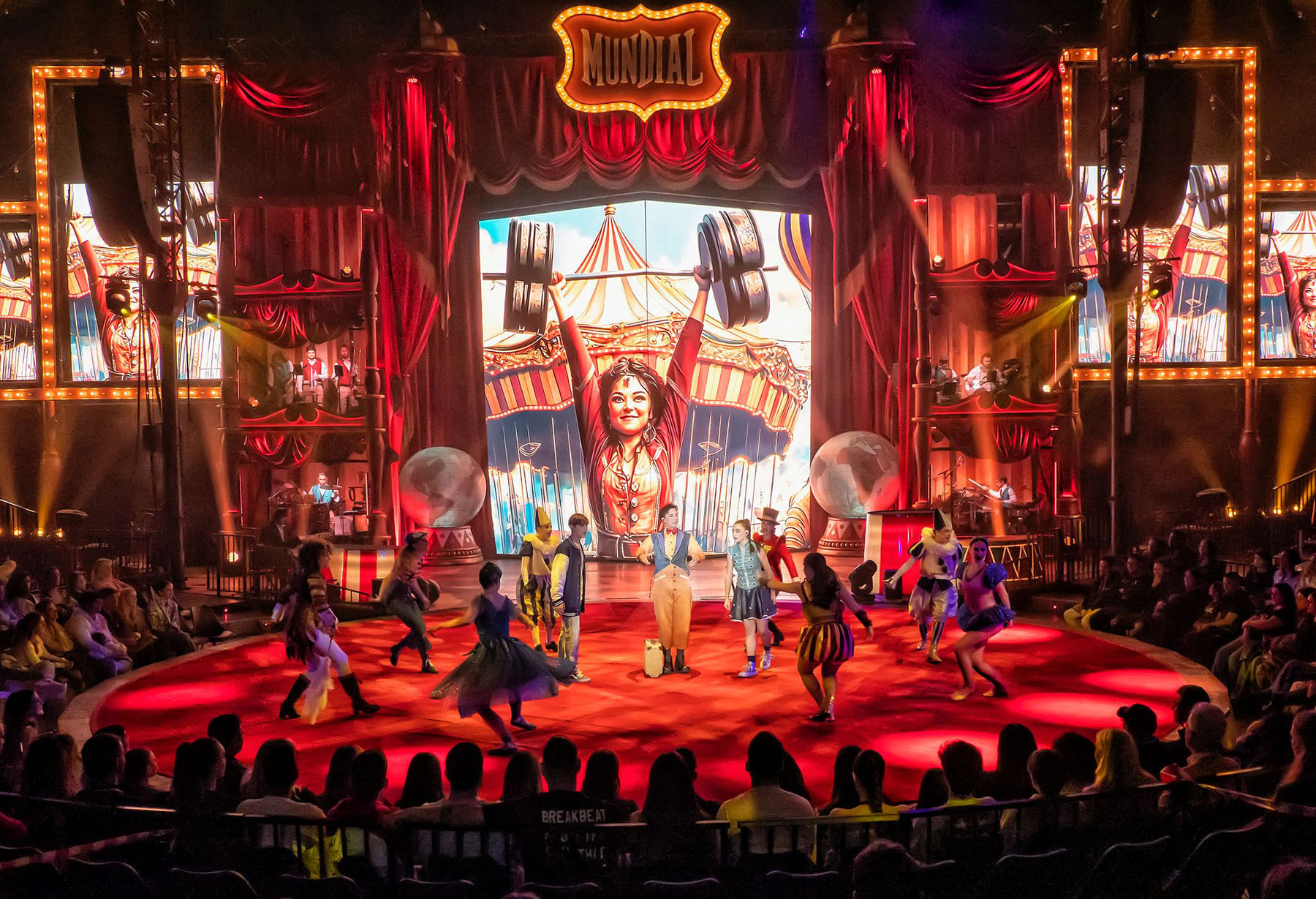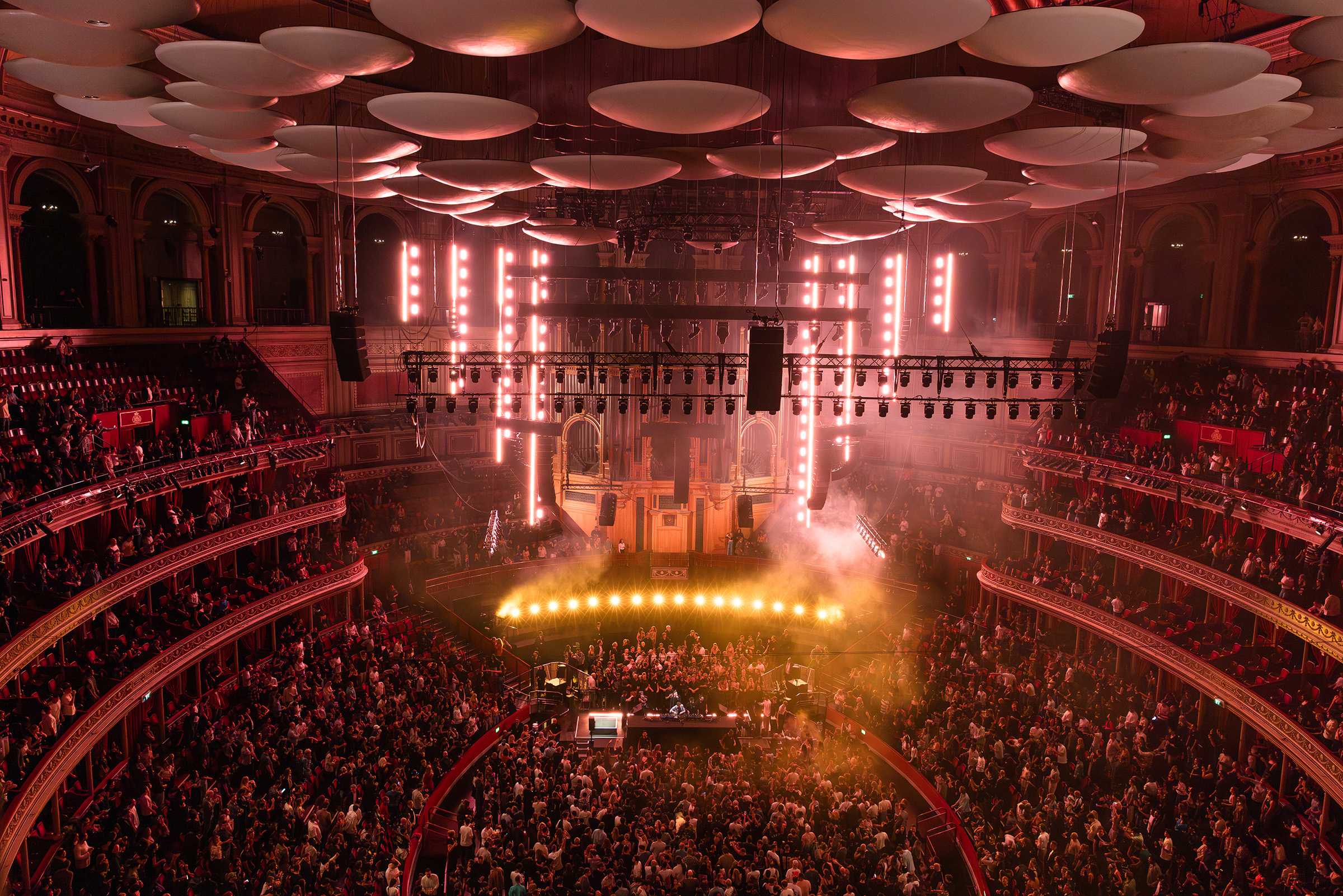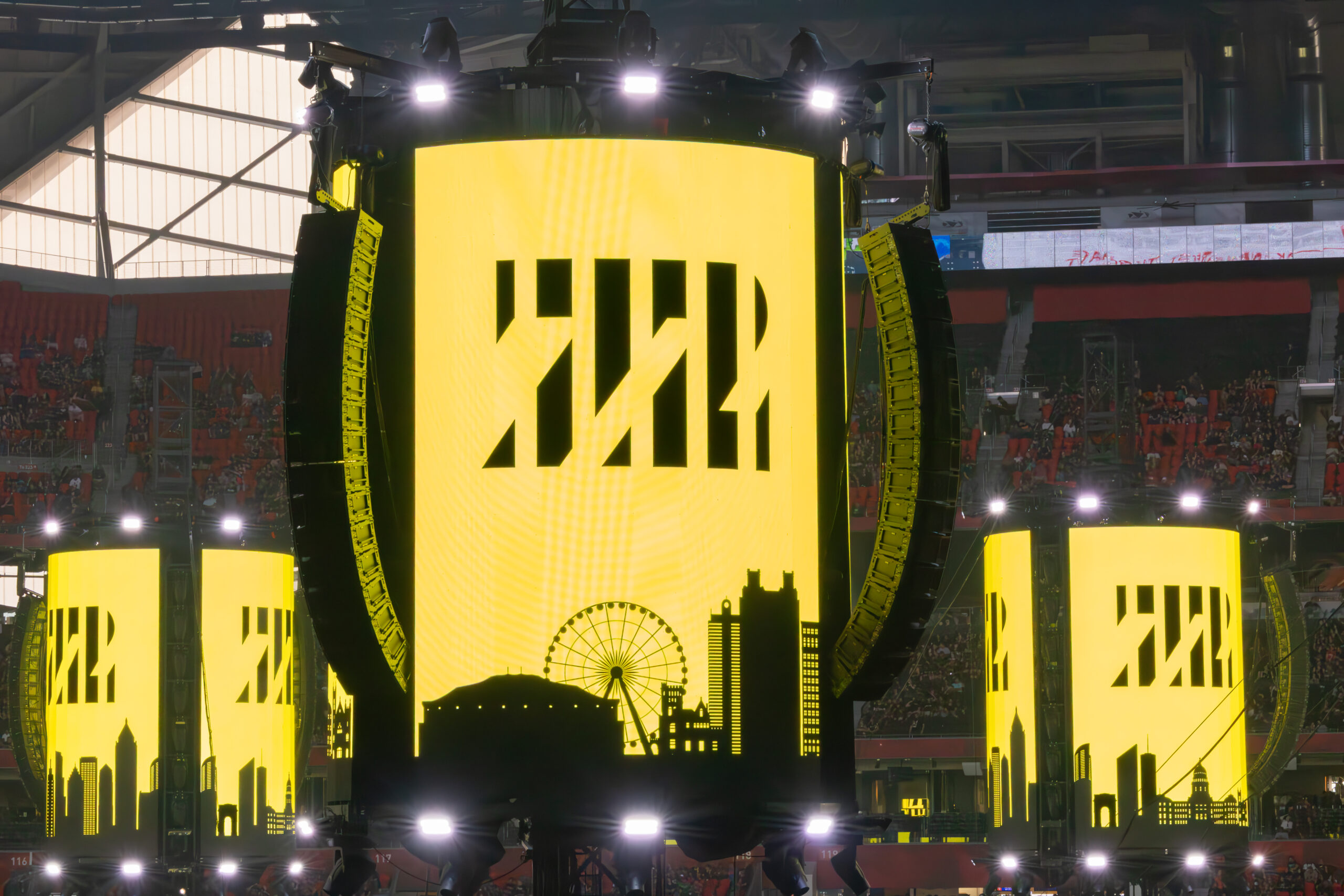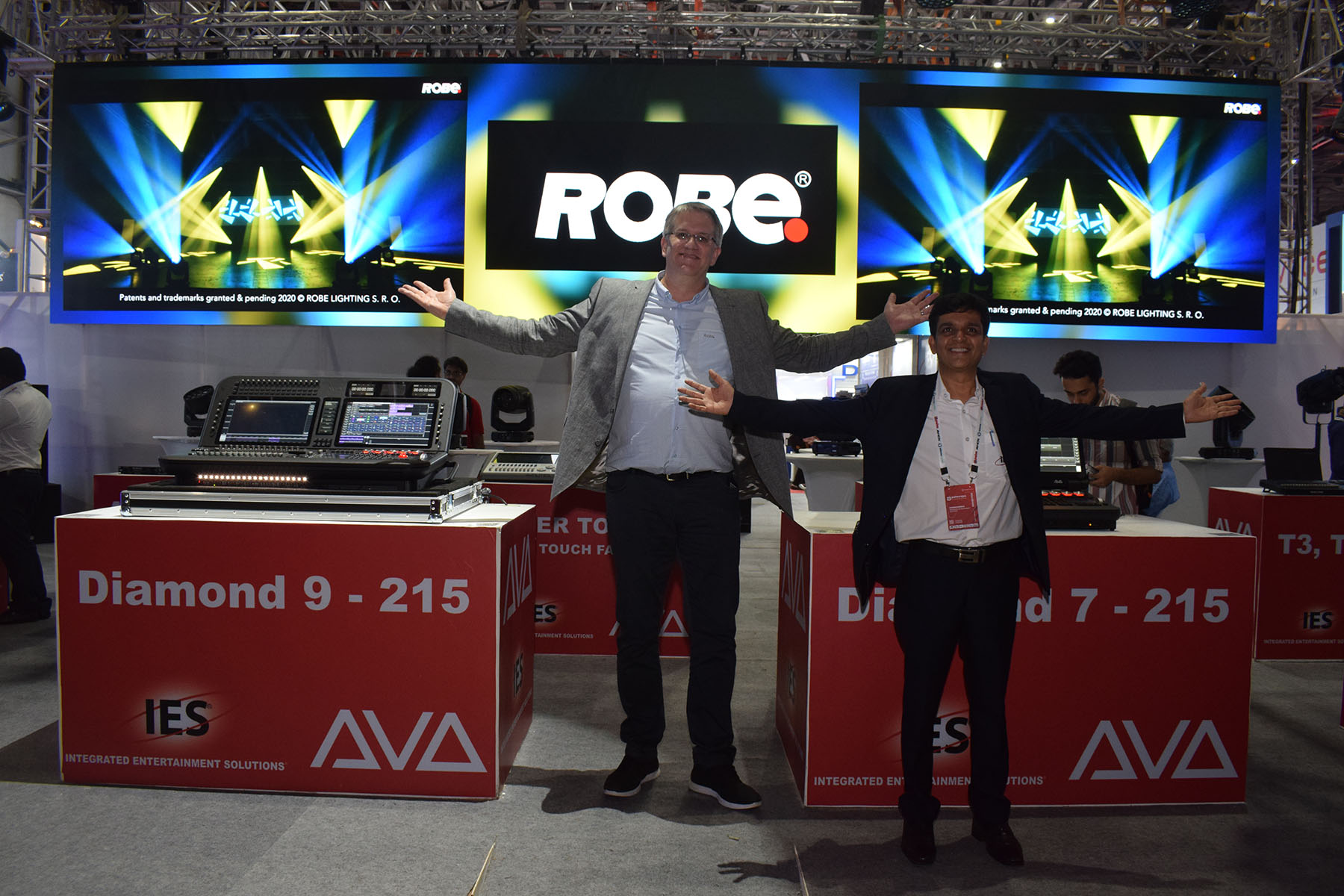MUNICH – The lighting department of the Bayerischen Staatsoper (Bavarian State Opera), under the direction of Michael Bauer, specified a new ETC Gio lighting control desk for Munich Opera’s recent open-air festival. This year’s Munich Opera Festival, from June to July, kicked off with a spectacle. Richard Wagner, Giuseppe Verdi, and the Bavarian State Opera all marked their 200th birthday this year. To celebrate, the Opera staged Wagner vs. Verdi, a playful competition in which the two great composers meet each other as giant marionettes in the plaza outside the Bavarian State Opera House.
More details from ETC (www.etcconnect.com):
Cheered on by about 10,000 visitors, the 31-foot-high internally-lit futuristic figures were affixed to large cranes and moved like marionettes, while the faces of two actors were projected onto the puppets’ faces — creating the dialogue between the two composers.
The ‘matchup’ began around 10 p.m. as it became dark enough for lighting and video (the two essential elements of this spectacle). Music by the two famous composers was complemented with pieces by contemporary church-music composer Moritz Eggert.
The opera’s master electrician Benedikt Zehm designed and implemented the lighting concept. Tina Emmerich sat at the lighting control desk, housed in a scaffolding tower in the middle of the square. Lighting and video technician sat side by side.
Michael Bauer, head of lighting at the Staatsoper in Munich, chose to use an ETC Gio console to control the mixed rig, which included 14 Martin MAC 2000s, 21 LED spotlights by JB Lighting, and 10 GLP impression 120s, via three wireless DMX transmitters.
The Gio was the first choice for Tina Emmerich to handle the numerous lighting effects. “The large-scale distribution of different complex lighting fixtures throughout the plaza, in the front-of-house tower, in surrounding buildings, and on two stages — in addition to the two internally-lit marionettes themselves — can quickly become confusing.”
“The Magic Sheets in the new Eos 2.0 software were an enormous help in keeping everything at a glance. I was able to build a topographic view of the entire rig, with flexible on-screen fixture symbols providing a quick overview, telling me, for example, which unit type is active in which color. Also, different color effects could be finely tracked and edited, even without my actually having real devices to work within view.”
“In addition, I found it useful to zoom into the Magic Sheet and store that setting in a snapshot along with other parts of the user interface. A more basic advantage is of course the easy selection via the touchscreen. For example, when asked, ‘Now make the marionette arms red,’ it was simply faster to click on the group for Arms, than to have to maybe first look up a lot of channel numbers and then key those in.”
Toward show time, the crane’s giants were hoisted. In the darkness of the lighting tower, Emmerich was pleased with the backlit keys and two tiltable LCD multitouch displays on her Gio console, which let her move quickly between all of her settings. Meanwhile, outside, the Residenz façade, a roof of the house across the way, a portal of the opera, and a roof frieze were being elegantly lit, enthralling the spectators for a good hour long, before the roaring applause began.
Video of Staatsoper zum Open Air Wagner vs. Verdi: http://www.youtube.com/watch?v=2KgQTLXdblc



